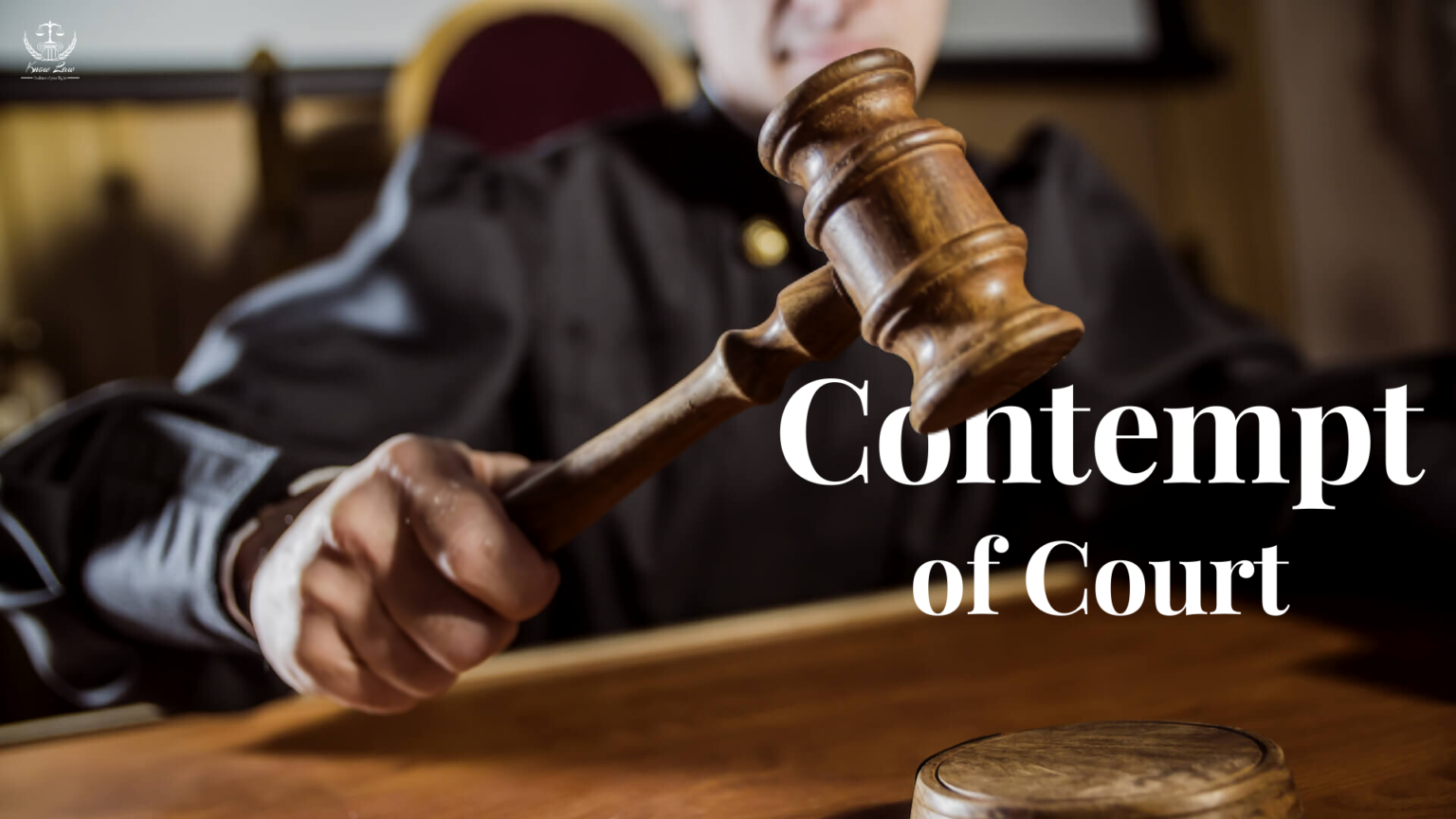The word “contempt of court” simply means acting disrespectfully or disobediently towards a court, which entails wilfully disobeying a court order or treating the judiciary with contempt. In India, contempt of court is regulated by the Contempt of Courts Act, 1971 (hereinafter referred to as “the Act”) where under Section 2(a) of the Act, the concept of contempt of court is defined as either civil or criminal contempt. The Indian Constitution recognizes the Supreme Court as a “Court of Record” under Article 129, and empowers it with all the authority of such courts, including the ability to penalize for self-inflicted contempt. Under Article 142(2) of the Constitution of India, subject to the provisions of any law made on this behalf by Parliament, the Supreme Court shall, as respects the whole of the territory of India, have all and every power to make any order for the purpose of securing the attendance of any person, the discovery or production of any documents, or the investigation or punishment of any contempt of itself. Hence, while the Contempt of Courts Act, 1971 has been enacted to give legislative effect to the power of the Court with an objective to define and limit the powers of certain courts in punishing contempt of court and to regulate their procedure in relation thereto[i], the Constitution by itself recognizes and empowers the Court to punish for contempt of the Institution. Let us now decode the two types of contempt as recognized under the Act.
- Civil Contempt of Court
Section 2(b) of the Contempt of Courts Act, 1971 defines “civil contempt” to mean wilful disobedience to any judgment, decree, direction, order, writ or other process of a court or wilful breach of an undertaking given to a court.
Therefore, certain essential ingredients ought to be satisfied in order to constitute civil contempt, which are:
- the existence of a valid Court judgment, decree, direction or order;
- knowledge of such judgment, decree, direction or order by the respondent;
- ability of the respondent to render compliance;
- wilful disobedience of the order.
Whether or not the act of disobedience was wilful or not is a what is adjudicated upon by the relevant Court, which varies upon the facts and circumstances of each case.
In Indian Airports Employees Union v. Ranjan Chatterjee[ii], the Supreme Court held that in order to show that to constitute an offence of civil contempt within the meaning of Section 2 (b) of the Contempt of Courts Act, the disobedience of orders of the Court must be shown to be wilful and proof of mere disobedience is not sufficient. According to Supreme Court in the absence of proof of deliberate flouting of the orders of the Court, it would not be appropriate to hold it as a case of civil contempt.
Criminal Contempt of Court
Section 2(c) of the Contempt of Courts Act, 1971 defines “criminal contempt” to mean the publication (whether by words, spoken or written, or by signs, or by visible representation, or otherwise) of any matter or the doing of any other act whatsoever which-
(i) scandalizes or tends to scandalize, or lowers or tends to lower the authority of, any court;
(ii) prejudices, or interferes or tends to interfere with, the due course of any judicial proceeding; or
(iii) interferes or tends to interfere with, or obstructs or tends to obstruct, the administration of justice in any other manner.
From the above, the following essentials are necessary to constitute criminal contempt:
- Publication of any matter;
- Scandalizing or lowering the authority of the Court;
- Prejudice or interference with the due course of judicial proceedings;
- Interference/obstruction with the administration of justice in any other manner.
The Supreme Court in the case of In re S. Mulgaokar[iii] enunciated on the principles in relation to contempt powers of the Court, imposing a caution in exercising power of contempt proceedings.
- The first rule in this branch of contempt power is a wise economy of use by the Court of this branch of its jurisdiction. The Court will act with seriousness and severity where justice is jeopardized by a gross and/or unfounded attack on the judges, where the attack is calculated to obstruct or destroy the judicial process
- The second principle must be to harmonise the constitutional values of free criticism, the fourth estate included, and the need for a fearless curial process and its presiding functionary, the judge.
- The third principle is to avoid confusion between personal protection of a libeled judge and the prevention of obstruction of public justice and the community’s confidence in that great process. The former is not contempt, the latter is, although overlapping spaces abound.
- The fourth functional canon which channels discretionary exercise of the contempt power is that the Fourth Estate which is an indispensable intermediary between the State and the people and necessary instrumentality in strengthening the forces of democracy, should be given free play within responsible limits even when the focus of its critical attention is the court, including the highest Court.
- The fifth normative guideline for the judges to observe in this jurisdiction is not to be hypersensitive even where distortions and criticisms overstep the limits, but to deflate vulgar denunciation by dignified bearing, condescending indifference, and repudiation: by judicial rectitude.
- The sixth consideration is that, after evaluating the totality of factors, if the court considers the attack on the judge or judges scurrilous, offensive, intimidatory or malicious beyond condonable limits, the strong arm of the law must, in the name of public interest and public justice, strike, a blow on him who challenges the supremacy.
[i] Preamble, Contempt of Courts Act, 1971
[ii] Indian Airports Employees Union v. Ranjan Chatterjee, (1999) 2 SCC 537
[iii] In Re Mulgoakar v. Unknown, AIR 1978 SC 727


